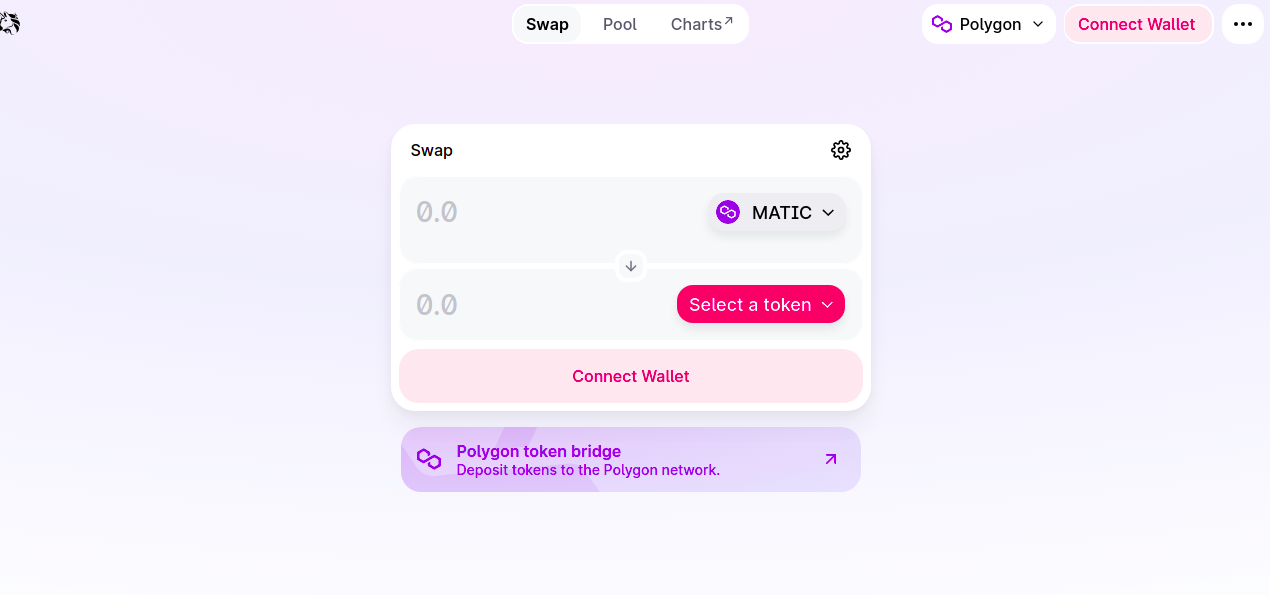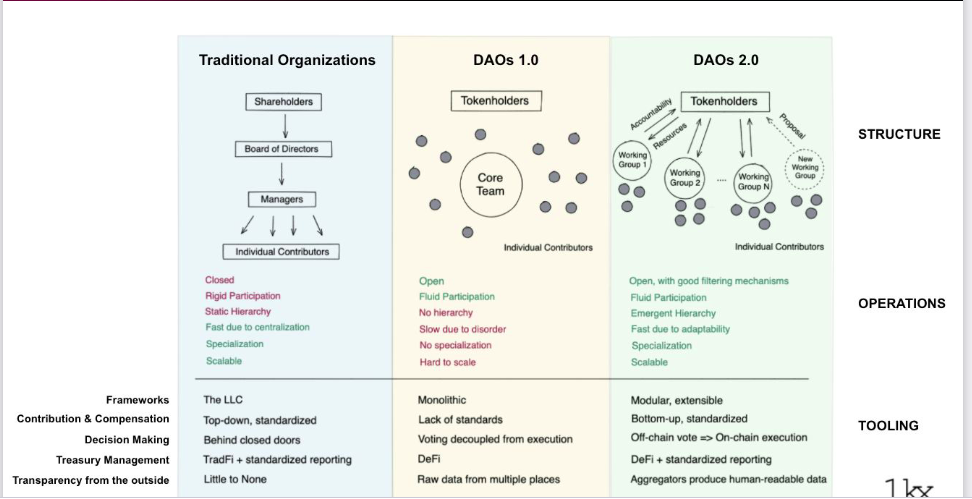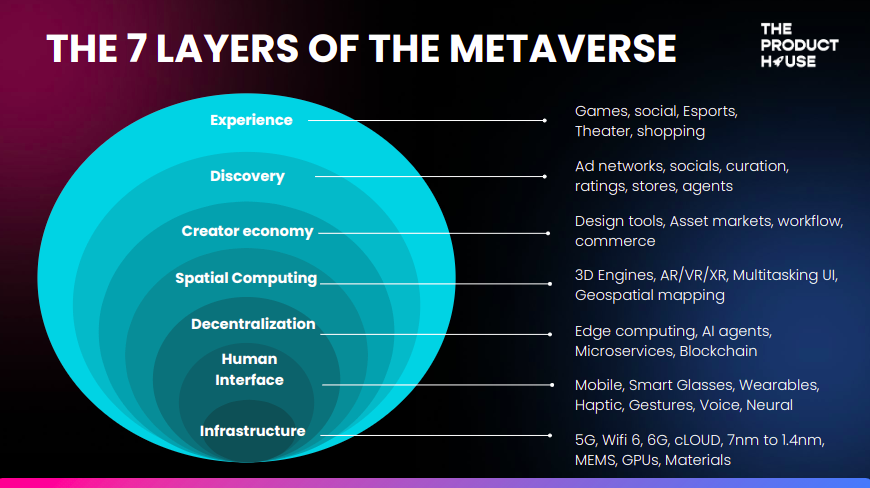This article was published as a part of the Data Science Blogathon.
Introduction
Recently I have attended a course on Web 3.0 presented by the product house. The product house is a growing startup that provides learning and earning opportunities in the web 3.0 space. This course had a six-week curriculum covering Web 3.0, Blockchain, and its aspects up to Metaverse. This article will explain and summarize these concepts following the curriculum structure. So if you do not have time to go through the course, you can understand these concepts via this article.
Web 3.0 is the decentralized version of the current web which means less control of any entity but of users. Web 3.0 products are more secure, transparent, and private. I have posted about Web 3.0 and some basic stuff recently. You can check these concepts here and some web 3.0 terminologies here.
This article will cover the concepts following these posts as follows:
- Defi
- DAOs
- MetaVerse
- NFTs
- Opportunities in Web 3.0
It will be a roller coaster ride, so tighten your seat belt, get a cup of coffee and try not to throw up.
Defi
Decentralized Finance, Defi in short, is an open global financial system for the internet age. Let’s understand it with the existing financial system.
Web 2.0 financial system relies on a bank to store and transfer the money. A bank has all the control over your transactions and account activities. For example, If it bans or deactivates your account, that is in the bank’s hands. You have no control over it. You might recover the bank account later in some rare cases, but you would have to put much time and energy into doing so.
That is where Defi comes to your rescue by eliminating third-party control. This Defi network gives you complete control of your data, account, and some activities. Defi network is also permissionless; hence any developer can access and build on top of it. It is immutable since it is on a blockchain.

Applications of Defi
- You can swap your currency means you can convert Ethereum into USDT on Defi platforms like Uniswap.
- You can lend/borrow coins/tokens/money on Defi applications like nuo, aave, and compound.
- You can get a decent return in cryptocurrency for lending or borrowing crypto on Defi applications like curve, yearn, and compound.
- Soon you will be eligible to do more on Defi, such as buying insurance and credit scoring.
Defi activities such as lending/borrowing and token swapping rely on smart contracts. Defi protocol users ‘lock’ their crypto assets into these contracts for others to use them. These contracts are called liquidity pools. These liquidity pools serve as high-risk and high-reward appetites.
Liquidity pools maintain balance through some mathematical formulas coded alongside Smart Contracts such as AMMs (Automated Market Makers).
Defi liquidity gets expressed in terms of ‘Total Value Locked or TVL.’
According to the metrics site Defi Llama, the TVL in Defi is $222 billion till April 2022.
DAOs
DAO stands for Decentralized Autonomous Organization. The organization where its users also have control over decision making. DAOs are virtual entities with a certain set of members or stakeholders, perhaps with a 67% majority, which have the right to spend the entity’s money and modify its code. Every decision in the entity goes for voting first, then the majority of voters decide what decision to make.
There are two versions available of DAOs:

Metaverse
Mathew ball defines a Metaverse as a network of real-time rendered 3D virtual worlds, which can be experienced synchronously by an unlimited number of users with an individual sense of presence. This experience can happen with a continuous flow of data, such as communications, identity, objects, history, payments, and entitlements.
Moreover, we can live, work, shop, interact, and have fun together in a Metaverse. We can do any of these kinds of stuff anywhere and at any time.

It has been considered the next big step in the internet revolution. But how is it different from the internet we know?
Well, let’s see what it has got for you:
- There are tons of activity options, such as Games, concerts, and art exhibitions, you name it!
- You are not merely a spectator but someone who lives these experiences.
- You can transfer your identity, currencies, and digital assets across different 3D rendered worlds.
- You can link and share content with others.
- The best part? You are an active participant in building the Metaverse.
A Metaverse requires the following layers to operate efficiently:

- Infrastructure Layer: This layer contains technological aspects like 5G, Wifi 6, 6G, CLoud, GPUs, MEMs, and Materials.
- Human Interface: This layer consists of Mobile, Smart Glasses, Wearables, Haptic, Gestures, Voice, and Neural.
- Decentralization: Edge computing, AI agents, Microservices, and Blockchain.
- Spatial Computing: 3D Engines, AR/VR/XR, Multitasking UI, and Geospatial mapping.
- Creator Economy: Design tools, Asset markets, Workflow, and Commerce.
- Discovery: Ad Networks, Socials, Curation, Ratings, Stores, and Agents.
- Experience: Games, Social, Esports, Theater, and Shopping.
DAOs and Defi play a crucial role in Metaverse since Defi applications handle finances, and DAOs take care of decision-making.
Non-Fungible Tokens (NFTs)
The tokens which are non-interchangeable or non-fungible are called NFTs. Assume you have two $100 bills, one with the signature of your football player, Lionel Messi, and the other is a simple one. Now you can imagine the first bill with Messi’s signature worth more than $100 for you. And you can not interchange this bill with anyone but with a similar kind of bill. Now this bill has become an NFT for you.
Thus NFTs are digital assets that you buy from an NFT Marketplace, such as Opensea, LooksRare, etc.
Use Cases of NFTs
NFTs have different use cases from fungible tokens (ERC-20, etc.)
- Not all art is created equal (Profile Pics, Stunning Arts)- Web3 Equivalent: CryptoPunks, BoredApes, and Rockstars of EPNS.
- Enabling exclusive access (Amex Black, Priority Pass)- Web3 Equivalent: BoredApes, and Rockstars of EPNS.
- Providing proof of presence / Credit (Concert Passes, Photos with Celebs)- Web3 Equivalent: POAP and Shadowy Coders.
- NFTs Other innovative use-cases (Identity, bundling, real estate)- Web3 Equivalent: ENS, Rockstars of EPNS, Charged Particles, and Decentraland.
NFTs follow ERC(Ethereum Request for Comments) standard that improves the Ethereum network. ERC-721 was the first NFT standard, and many more have come after that.

If you want to learn more about these concepts, please check out the product house course on Web 3.0 Fundamentals.
Conclusion
There is a lot to learn in the Web 3.0 space since this space is growing and changing rapidly. This article covered just the overview of Web 3.0 fundamental concepts. If someone wants to build a career in Web 3.0: she must understand the fundamentals first.
The key takeaways from this article are as follows:
- Defi (decentralized finance) enables users to lend or borrow tokens directly and build liquidity pools.
- DAOs are decentralized autonomous organizations where the majority shareholders vote for any expenditure and product development in the entity.
- Metaverse is a rendered 3D world where one can do various fun and social activities.
- NFTs are non-fungible tokens that follow ERC standards and have various use cases, such as enabling credit, exclusive access, and assets.
If you find this article informative then please share it with your friends and Web 3.0 enthusiasts. Moreover, please reach out to me here for any feedback, correction, or suggestion.
The media shown in this article is not owned by Analytics Vidhya and is used at the Author’s discretion.







